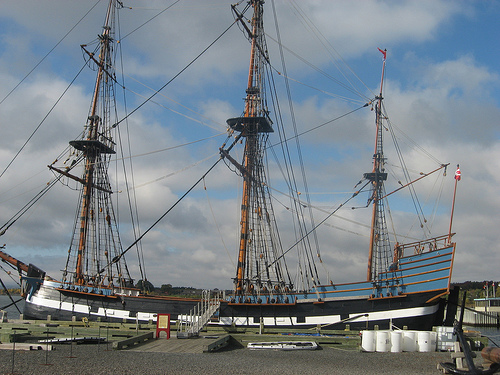
It is difficult, I would assume, for most Americans to truly understand the immigrant experience. It is easy for us, in our well-appointed homes with all of our privilege, to sit in judgement of those who come to America, legally or illegally, when we see them on the street or read about them in the news. But what is it that drives someone to leave all that they have and everyone they know and set off to a strange place they have never seen before? What drives a person to place their life in the hands of another, with nothing but a promise that they will get you where you want to go? And what waits for them at their new destination when they arrive? Like so many other immigrants that came to the new world in search of a better life, the story of the first Scottish immigrants to Nova Scotia asks some of those very same questions.
By the early 1770’s the Highland Clearances were in full swing. People were being cleared off land that they never owned, but land that they had lived on, and fought for, for generations. The owners of the land, many of whom did not live in Scotland, had decided that it was more profitable to graze sheep on that land then to allow families to live and farm there. These Highland families were driven off the land and into crowded cities and into a lifestyle that they had little or no understanding of so when the opportunity came to leave and seek a new life, or rather continue their old life, in a new place they jumped at it.
John Pagan and Dr. John Witherspoon had been given three shares of land in Canada and were seeking people to come with them to start a new civilization in what would become Nova Scotia (New Scotland). Twenty-three families and twenty-five single men, 189 in total, agreed to free passage in exchange for one year of provisions and a farm to start their new life. Most were poor, illiterate crofters and artisans from the Greenrock area of the Highlands of Scotland who only spoke Gaelic but the spirit of adventure was upon each of them.
Around the second week of July 1773 they boarded the ship Hector for the for the eight week journey. Shortly after they left port they were shown to their accommodations below deck by the crew who were no more than children themselves, but by now they had become seasoned sailors at the age of 11 or 12. Each family was given one small “place” to call their own with no mattress or any other cover. All of their possessions would be stored in this “place.” They were allowed to use old pieces of canvas to make partitions to separate the families and the single men from each other.
Buckets were located below deck to be used for the “necessary” but also served as, what the crew called “puke buckets.” They soon learned that when emptying them over the side of the ship one does not does this in the wind. Life below deck was unpleasant but the promise of a new life in a new place drove them on.
The Ship Hector was an old ship, built in the Netherlands prior to 1750 and was used primarily for local trade in the waters off the British Isles. Once the immigrant trade began she was pressed into service and had made at least one trans-Atlantic voyage from Scotland to Boston around 1770. She was 85 feet long and 22 feet wide with 3 masts and weighed in at 200 tons. She was known as a boot ship and did not look like ships that may come to mind, she had a very blunt nose at her bow.
The ship ran into a hurricane off the coast of Newfoundland and was blown back as far as the shores of Ireland. Many of the passengers begged the captain to make port and let them off but the captain refused their plea. If he had not completed his journey he would not have been paid so he set sail again and after a two week delay, land was spotted in what is now Pictou Harbor Nova Scotia. Eighteen of their number, most of them children, perished during the journey from dysentery and smallpox and those who completed the journey would face continued hardships for many years to come as they scratched out a new life in the new world.
